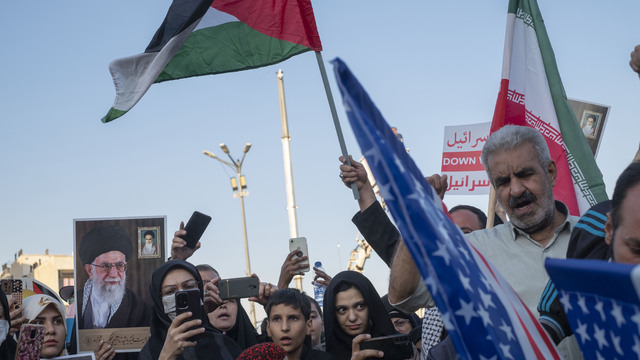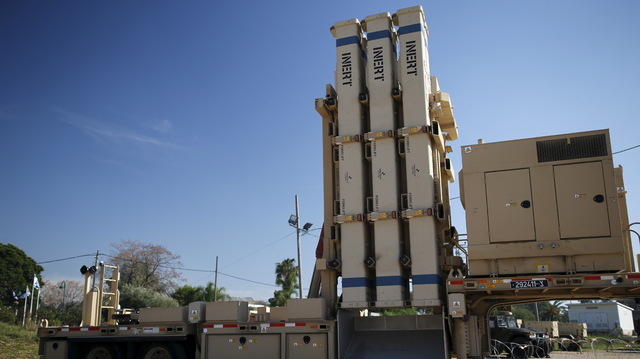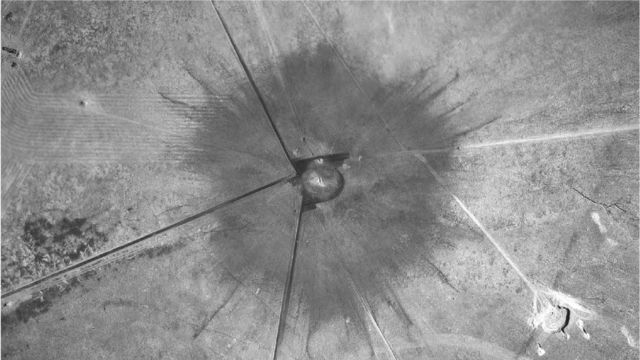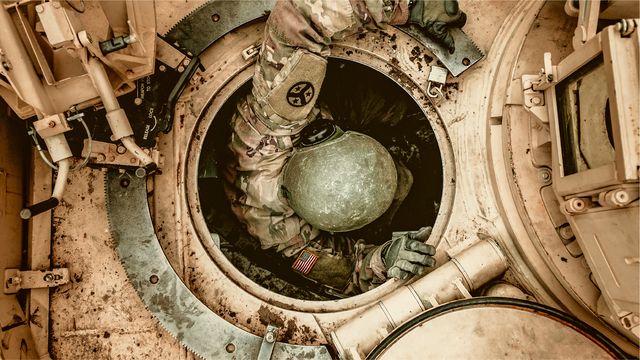Does the Negotiated Convention on the Prohibition of Nuclear Weapons contradict the NPT?

“Each of the Parties to the Treaty undertakes to pursue negotiations in good faith on effective measures relating to cessation of the nuclear arms race at an early date and to nuclear disarmament, and on a treaty on general and complete disarmament under strict and effective international control.” (Article VI, Treaty on the Non-Proliferation of Nuclear Weapons)
Introduction
As regards nuclear disarmament negotiations, the year 2017 has been exceptional so far. The main reason for such praise is that this year, the historically unprecedented two-stage negotiations regarding the Convention on the Prohibition of Nuclear Weapons have begun at the UN conference in New York. The first round of the talks already took place on March 27–3, 2017, the second one began on June 15 and will finish on July 7, 2017 (see the following International Law Reflections no. 10, November 11, 2016, no. 1, March 1, 2017 and no. 5, May 2, 2017).
Moreover, in the first half of the year, the first meeting of the Non-Proliferation Treaty Preparatory Committee for the 10th Review Conference of the Parties to the Treaty on the Non-Proliferation of Nuclear Weapons took place in Vienna on May 2–12, which opened the Treaty’s review process. Within its framework, the Committee has scheduled another two meetings before the whole review process will reach its climax in 2020 with the 10th Nuclear Non-Proliferation Treaty Review Conference. After the failure of the preliminary Review Conference in 2015 due to fact that it did not come to a consensus or an agreement on the final report, the following review process is of the utmost importance, especially in the context of the future negotiations about the Convention on the Prohibition of Nuclear Weapons.
The Worsening of the International-Security Climate and the Nuclear-Disarmament Talks
The negotiations are held in the times of the current dangerous and precarious developments in the international setting. In addition to the controversial politics of North Korea’s leadership regarding nuclear weapons and missile tests and the unpredictability of the foreign and security policy of the new US administration, there is a possibility of an outbreak of a regional armed conflict within the Korean Peninsula that could potentially escalate to the point that nuclear weapons would be used. Moreover, the deteriorating Russian-American relations significantly contribute to prospects of the development in the global arena appearing to be unfavourable.
It is also important to bear in mind that all nine of the nuclear-armed states (China, France, India, Israel, the DPRK, Pakistan, the Russian Federation, the United States and the United Kingdom) insist on preserving the controversial nuclear deterrence policy, which serves as a justification for the possession of nuclear weapons for their security. In practice, this policy leads to the modernisation of nuclear weapons and their means of delivery, and in fact triggers a nuclear arm race. Particularly the US and Russia, the countries with the largest nuclear arsenals, maintain a part of their weapons at a high degree of military preparedness so that they would be ready to be launched within a few minutes and refuse to substantially decrease the role of nuclear weapons in their military doctrines. So far only two nuclear-armed states (India and China) officially declared a no-first-use policy as regards nuclear weapons, which in practice implies that other nuclear countries do not reject the possibility of launching a preventive nuclear attack.
The unfavourable conditions are underpinned by the twenty-year standstill at the Conference on Disarmament in Geneva as the main forum for negotiating disarmament treaties, and the failure to reach an agreement regarding the Fissile Material Cut-Off Treaty (FMCT). Another factor that nurtures the problematic situation is the reluctance of the US, China and a few more countries to ratify the Comprehensive Nuclear-Test-Ban Treaty (CTBT), which prevents the entry into force of this important instrument of international law.
All of this, in addition to the conclusions drawn from three international conferences in 2013 (Oslo) and 2014 (Nayarit and Vienna) that discussed the humanitarian consequences of the use of nuclear weapons, explain the increasingly pressing efforts of most members of the international community and civil society to make rapid progress in the area of nuclear disarmament.
So far, all nuclear-armed states and the majority of their allied and partner countries have been boycotting the talks regarding the Convention on the Prohibition of the Nuclear Weapons. The arguments for their opposition revolve around their concerns about the negative impact of the Convention on the adherence to the NPT, and ultimately its very existence. For this reason, the following passages will be devoted primarily to a comparison of the fundamental differences between these two instruments of international law and their complementarity. Special attention will also be devoted to a brief evaluation of the negotiations led by the abovementioned Preparatory Committee session regarding nuclear disarmament.
The characteristic of the Non-Proliferation of Nuclear Weapons Treaty (NPT) and Its Review Process
Unlike the already valid conventions banning two other types of weapons of mass destruction (chemical and biological), the NPT is not disarming by definition. The treaty was submitted for signature in 1968 and entered into force in 1971.
According to the text of the treaty, composed of a preamble and eleven articles, around 190 State Parties are divided into two groups with respect to their possession of nuclear weapons or lack thereof. The first one includes the majority of non-nuclear states, which are forbidden by the treaty to ever develop a nuclear arsenal. The second one represents the five so called ‘declared’ nuclear weapon states and permanent members of the Security Council (China, France, Russia, Great Britain and the United States of America). Hence, fundamentally the treaty grants the mentioned countries a legitimate legal permission to possess nuclear weapons with the reason given being that they carried out nuclear tests before January 1, 1967 (see article IX, paragraph 3). With the exception of a brief note in the preamble, the nuclear disarmament statement binding all State Parties is included only in article VI (see the above motto). Its vague formulation, however, does not present any timeline for the destruction of the nuclear weapons, nor does it set further detailed responsibilities for the nuclear-weapon states to reach the desired goal. The remaining articles predominantly deal with the matter of nuclear non-proliferation, and partially discuss the peaceful use of nuclear energy including the safeguarding role of the International Atomic Energy Agency (IAEA).
In comparison to the Chemical Weapons Convention, which is considered to be the most elaborate disarming legal instrument, the NPT also lacks an institutional dimension, as there is no permanent secretariat or specific organization in it which would provide such a dimension. It also has almost a universal membership; nevertheless, four nuclear-armed states are not included in it: India, Pakistan, Israel and the DPKR. The last of these countries withdrew from the NPT in 2003.
The NPT positively influenced the negotiation of the CTBT in 1996, which still has not entered into force. Some nucleararmed states make up for its absence with annual declarations of one-sided moratoria on nuclear weapon tests; nonetheless, some carry out the tests through computer simulations, which are not directly prohibited by the treaty. A particularly important aspect of the NPT is the creation of non-nuclear zones, which increase both global and regional security and gather together over 100 countries. Via the IAEA’s safety standards, the NPT provides a multi-layered framework for checks of the treaty’s responsibilities. It also makes possible the international cooperation in the peaceful use of nuclear energy.
Every five years, review conferences take place. The aim of these meetings is to evaluate the extent to which the signatories followed the responsibilities outlined in the NPT during the past five-year period and set goals for the following review conference. During the five years between the conferences, three meetings of the Preparatory Committee are held. The outcomes of these meetings are instrumental for they imply whether the upcoming conference will be a successful one or not.
Since the end of the Cold War there were three successful conferences. The Review and Extension Conference in 1995 and the Review Conferences in 2000 and 2010 have been evaluated as successful ones because of their consensual agreements on practical steps towards a world without nuclear weapons. President Obama’s ‘Prague speech’ from April 2009, which to a large extent addressed nuclear disarmament and the improvement of Russian-American relations, positively influenced the outcome of the 8th Review Conference of the NPT in 2010. These efforts gained a momentum in 2010 when both of the then presidents of the US and Russia, Barack Obama and Dimitry Medvedev, signed the New START Treaty. The document demands a decrease of the total number of strategic nuclear weapons and their means of delivery and establishes a detailed control system of its implementation. The conference was finished with the acceptance of the Final Report. A part of it was the Conclusions and Recommendations for the Follow-on Activities, which are referred to as the ‘action plan’ in the text. It consists of 64 actions divided into four groups of responsibilities in the area of peaceful use of nuclear energy, nuclear non-proliferation, nuclear disarmament and the compliance with the Resolution on the Middle East from 1995.
In stark contrast, the 9th Review Conference in 2015 did not follow a smooth path as it took place amid a complicated situation in the international sphere characterised primarily by the significant worsening of the relations between the US and Russia, the Russian annexation of Crimea and the Russian-Ukrainian conflict. Another factor fostering the negative atmosphere was the crisis erupting in the Middle East region with the civil wars in Syria, Iraq, Libya and Yemen as well as the failure to organise a Middle East conference, which would discuss the creation of a regional zone free of all weapons of mass destruction. Furthermore, the Korean Peninsula witnessed an increase in North Korean nuclear weapons and missile tests, and more concerns arose from the dangerous development in India-Pakistan relations.
The growing frustration of the majority of non-nuclear weapon states and non-governmental organisations caused by the slow pace of the disarmament and the continuing modernisation of nuclear weapons by the five so-called ‘declared’ nuclear-weapon states (China, France, Russia, the US and the United Kingdom, also knowns are the P-5) became apparent early on in the review process. These countries’ maintenance of their hold on the ‘step-by-step approach’, and their refusal to accept time limits and additional responsibilities such as decreasing their reliance on their nuclear arsenals in military doctrines or limiting the high-alert status of a certain number of these weapons, which are ready to be launched in a few minutes, further strengthened the determination of those opposed to this development to not just accept or comply with the status quo. The direct reason for the failure of the conference was the adverse position of the US, the United Kingdom and Canada in regard to the Final Report´s passage calling for the arrangement of the Middle East Conference, which would create a WMD-free zone in the region. The countries primarily opposed the suggested precise date of the talks, which is a stance that mirrors Israel’s distaste for the matter.
The Fundamental Differences of the Negotiated Convention on the Prohibition of Nuclear Weapons and Its Complementary Character in Relation to the NPT
The new convention will have ‘disarmament without any exception’ as its primary goal. It should ban especially the development, production, possession, acquisition, transfer, stockpiling, use and threat of use of nuclear weapons, including their deployment in non-nuclear states. Its agreed final formulation should represent the first stage of the nuclear-disarmament process, which does not necessarily require the participation of the nuclear-armed states. Their participation will however be absolutely pivotal to the second (and significantly longer) round of talks, which should result in the removal of nuclear weapons from the operational positions and the dismantling and destruction of stored nuclear arsenals.
The convention will strengthen the legal and political norms against the use of nuclear weapons, which should create more security for all states. Its formulation will also be a response to the current security challenges such as cyberattacks and the efforts of terrorists to gain radioactive materials. The agreed convention and its entry into force might be the trigger for working out some additional measures – for example, in the area of the verification of the disarmament process and the adoption of the FMCT. According to the proponents of the convention, the agreement will not endanger strategic or regional stability because especially in these spheres it aims to decrease the role and the importance of nuclear weapons in military doctrines.
Its complementarity with the NPT will be presented in its support of the goals and obligations included in the NPT addressing and aiming to prevent the humanitarian and environmental catastrophe that would come about as a result of a nuclear detonation. The final goals of both legal documents are parallel, because they both aim to prevent the outbreak of a nuclear war, to stop the nuclear arm race and to strengthen the international trust. The existence of the nuclear weapons ban convention itself will strengthen the NPT, most importantly its article VI, and amend its legal gap. Simultaneously, it should represent a challenge to the opinion that the possession of nuclear weapons ensures security for the nuclear-armed states and their allied countries, and that these weapons contribute to the international stability. The formalisation of a complete rejection of nuclear weapons and their stigmatisation by the majority of countries will strengthen the notion that the possession of such a mortal arsenal, which, if used, inflicts immense suffering and does not differentiate between targets, breaches the principles of international humanitarian law and is in contradiction with human rights. The banning of nuclear weapons in reality will inherently stop their proliferation, which supports the nonproliferation nature of the NPT. According to an article included in the draft of the proposed text, the convention should not affect the rights and responsibilities of the NPT State Parties.
Assessment of the Nuclear Disarmament Discussion During the First Meeting of the Preparatory Committee of the 10th Review Conference of the NPT
During the meeting, the debate in the general discussion and mainly during the talks on nuclear disarmament revealed the expanding gap between the supporters and opponents of the nuclear weapons ban convention regarding how to reach the main goal, meaning a world without nuclear weapons. Some non-nuclear weapon states emphasised the importance of lowering of the high-alert status of nuclear weapons and the increasing transparency not only in relations to the nuclear-armed states but in relations to non-nuclear-weapon countries on whose territories nuclear weapons are deployed (Germany, the Netherlands, Italy, Belgium and Turkey). These voices also criticised nuclear-armed states for not implementing their obligations, which were consensually accepted at the NPT Review Conferences in 1995, 2000 and 2010.
On the other hand, the opponents of the convention defended the nuclear deterrence policy with the purpose of maintaining world peace and international stability and voiced concerns about the withdrawal from the consensual principle of reaching agreements. For them, the most effective path to nuclear disarmament is the already mentioned step-by-step approach. Also, one of the most reoccurring arguments of the opponents was that the convention would not lead to a destruction of a single warhead. That is by all means true; however, the advocates of the convention regard the treaty as the first and necessary step on the long way to the elimination of nuclear arms, which understandably cannot be achieved without the participation of all nuclear-armed states.
The nuclear-armed states and the countries dependent on their protection then continued to point out that without the compliance of nuclear-armed states the convention will not be efficient and that the timing of the negotiations is not taking into account the need for a global stable security situation. The apparent unity of the five declared nuclear states (P-5), which is demonstrated by their common distaste for the convention banning nuclear weapons, is externally projected by their joint meetings and final communiqués. These, however, do not include, with the exception of China’s task to produce an overview of the key military terms, any substantial or specific disarmament actions. These actions would include especially a decrease of the high-alert status of the nuclear weapons and a significant limitation of the role of the nuclear arsenals in military doctrines, as well as increasing the transparency and the abolishment of the modernisation of nuclear weapons and their means of delivery.
Nevertheless, the reality is that the possession of nuclear weapons triggers fear, mistrust and suspicion. All of this comes to the surface in the Russia-United States and India-Pakistan relations, in the dealing with the DPRK, and in the attitudes of the Arabic countries and Iran toward the only Middle-Eastern nuclear country – Israel.
The only positive outcome of the talks is the general consensus that the nuclear disarmament negotiations need a stronger representation of women in the context of promoting gender equality.
Conclusion and Possible Future Developments
There is a likely possibility that the second round of talks at the UN conference in New York regarding the Convention for the Prohibition of Nuclear Weapons (June 15–July 7, 2017) will lead to a successful outcome of the nuclear-disarmament efforts led by the majority of non-nuclear weapon states, non-governmental organisations and some international organisations. The final draft of the international document could be presented for signature later this year in autumn during the 72nd General Assembly of the United Nations.
It is safe to assume that the nuclear-armed states and the majority of their allies and partner countries relying on their nuclear protection (most commonly the protection of the US) will maintain their opposition to the convention, whereas around 130 non-nuclear weapon states will sign and ratify the convention. After the convention enters into force (the suggested limit is forty ratifiers), it would co-exist in parallel to the NPT. Its depository should be the Secretary-General of the United Nations. Several events that might influence the international community’s views on the new convention will take place during this and the following year. Building on the relevant resolutions of the UN General Assembly, a High-Level Expert Preparatory Group will begin the talks on recommendations for the negotiation of the FMCT and in 2018 an Expert Group on Verification of Nuclear Disarmament will begin its work.
During the talks within the second Preparatory Committee session in 2018 for the 10th NPT Review Conference, a High Level Conference on Nuclear Disarmament should take place. Additionally, Trump’s administration is expected to present the U.S. Congress with a Nuclear Posture Review, which will replace Obama’s nuclear strategy from 2010, as well as new strategies for conventional forces and anti-missile defence. In summer of the next year, Brussels will host a NATO summit which should discuss, among other things, the future of the modernisation of the U.S. tactical nuclear weapons deployed in five European NATO countries (note: initially the summit was meant to have its session in Istanbul; however, the change occurred due to the voiced objections of Germany and some other allied member states in response to the domestic and foreign policy of Ankara).







